“Our employees are our greatest asset.” Everyone is saying it; however, only a handful of organizations genuinely live it out.
Naturally, those that abide by this code will win the war for talent because they will do what it takes to prove that they value their people. On the other hand, those that pay lip service to this powerful truth will be starved of top talent.
New attitudes for new times
What’s the greatest stifler of business growth? Any business leader worth their onions knows that it’s not markets, technology, competition, or products. The one thing above all others is the ability to get and keep enough of the right people.
Research has proven that companies that view employees as valuable assets and not cost centres outperform companies that don’t.
In his book, How to Hire A-Players, Michael Gerber recognized this when he said, “It takes A-Players to conceive, design and build a world-class business system.
When you find these A-players, valuing them is one of the best strategies your business can execute. Investing the resources to build a culture that values people will always pay a hefty return because employees are more inclined to be engaged and thoughtful of the business when the business is also thoughtful of them.
Here’s how engaged employees translates to tangible business results:
Recommended post: How Compelling EVP Is Crucial to Organisation Success
How Engaged Employees Are Business Greatest Assets
Why Employees are Assets #1 – Creativity and Innovation
All the robots in the world pale in comparison to the value that one well-developed and creative employee can bring to your business.
As a matter of fact, we often forget that people made robots. Consequently, AI can never replace the best people.
So, when you find the right people, please give them the support, training and freedom they need, and they’ll, in turn, give you hard-to-duplicate value.
Why Employees are Assets #2 – Superior Customer Relationships

If your customers are indeed the lifeblood of your business, then you’d never risk losing them, right? Right!
Well, then always remember that your employees are the face of your company to your customers. In every interaction, they’re making impressions about your company.
If your people feel valued, they will do all within their means to strengthen your company’s bond with customers.
This is because they fully understand that your business will grow if your customers are happy. Because they know that you care for them already, they’ll be self-motivated to work harder to grow the business that grows their families.
Why Employees are Assets #3 – More Customers Mean More Revenue
In his book The Practice of Management, Peter Drucker declared correctly that a business has only one purpose: to create a customer.
No matter how versatile and hardworking you are as a business owner, you can’t do it all on your own. You need enthusiastic employees to bring in the customers that grow your business. Motivated employees do just that.
In addition, they often innovate and find more efficient ways to work. Increased innovation can lead to new ideas, products, and revenue streams.
If your employees are happy with their workplace, they’ll be less likely to leave. In the long run, with good management, the continuous presence of the best people will translate to higher profits for your company.
Why Employees are Assets #4 – Brand Building and Reputation
People talk, and in time what is said often becomes what is seen as the truth. When your employees talk about work with their neighbours and friends, do they have positive things to say?
If yes, congratulations! Positive talks like that are what it takes to build and strengthen your company’s reputation as a great place to work.
So, does your company value its employees?
Here’s how to determine if a company values its people:
Good Read: How to Manage Toxic Employees and Protect Your Team
6 Ways to Show Your Company Values People as Assets
When the rubber meets the road, how can you tell if your company is walking the walk versus just talking about its commitment to its employees? The answers lie in their action, so watch what the company’s leadership does.
Action speaks louder than words. And when it comes to valuing people, this is even more true. So, if you’d like to demonstrate that you value your employees, consider these six things:
1. Demonstrate to your employees how their work affects business outcomes
Long gone are the days when all that people wanted was a paycheck. These days, research repeatedly shows that millennials want more; they wish to instil meaning and purpose into all areas of their lives — including their work.
So, if your employees understand how their work contributes to results, they’re more likely to be engaged on the job.
One way you can do this is to allow them to job shadow someone in another department. This can allow them to see how their job function compliments another aspect of the business.
When they get a broader understanding of the organization’s inner workings, they’d be better equipped to identify areas where they could work more efficiently or solve problems they may not have known existed.
2. Build a strong community.

It is said that success leaves clues. Globally, successful leaders display a similar pattern in leading their teams to generate strong results.
When they build their teams, the first thing they do is to instil in them a sense of purpose, a mission. And then, they create a supportive culture in which employee feedback is valued.
As a result, their employees feel free to raise issues that interfere with the mission and share ideas to help the team achieve its goals.
Without this sense of community and clear mission, employees are more likely to look out for themselves instead of the whole company.
3. Don’t just draw out from your employees; put back into them
Whether we accept it or not, businesses do not build themselves; people build the business. And to get the job done, high-performing employees often have to invest heavily in their personal and professional growth.
Success never happens by chance. Developing your top performers is a vital way of saying: “I not only value your contributions, but I also value you as an individual.”
So, be sure to guide your team members toward training, development, and mentorship programs in your company.
When your employees develop skills that help them do their jobs better and more efficiently, they are more likely to provide the discretionary effort that drives innovation and productivity.
4. Practically support them
The demands of work never end, neither must your support for your team. For instance, when you assign a new project to your team, ensure they have all the information and resources they need to succeed.
If there’s something they will need that you don’t have yet, make sure they know that you’re working on it.
5. Give room for innovation
Innovation is defined as the application of creativity. Unfortunately, more often than not, leaders pay lip service to innovation. Yet, top performers value the opportunity to try their ideas.
And so when they have your blessing to be innovative, it is a big deal to them, and they will reward you by taking the initiative to seek new ways of doing their jobs and more efficient approaches to using company resources.
However, innovation often carries a risk of failure. To demonstrate to your people that you mean what you say when you ask them to be innovative, make it very clear that failure is not fatal.
Frequently tell your employees, “I want you to feel free to fail and try again.” Discuss what went wrong, why the idea wasn’t feasible, or even why it might work well under different circumstances. Help them see that failure is the ultimate learning experience.
6. Clear the path for your team’s success.
The core job of a leader is to remove obstacles so that their team can innovate, produce and succeed.
So, be on the lookout for those roadblocks. When you issue out a project to your team, put infrastructure to ensure that the people have what they need to succeed.
And keep building a team culture of trust and empowerment, so your people feel comfortable asking for your help with barriers they run into.
It is true what they say about people leaving managers, not companies. To be the kind of manager that employees struggle to leave, be sure to build the above tips into your management style.
Ultimately, to Find Assets, Hire with Care.
In Good to Great, Jim Collins states, “The old adage ‘People are your most important asset’ turns out to be wrong. People are not your most important asset. The right people are.”
Hiring the right people will require that you learn new best practices and let go of old habits like “going with your gut.”
Though intuition during the interviewing process has its place, it is exceptionally susceptible to pitfalls like the unconscious bias that can hinder your ability to identify the best candidates. A more effective approach is to include assessment tools in your recruitment process.
Talent assessment is a crucial component of a company’s hiring strategy. The right talent assessment tools and methods not only enable you to accurately evaluate your candidates’ hard and soft skills, potential, and knowledge, they give dependable insight into their personality, cognitive abilities, behaviour, and attitude.
There’s no way you can determine if an applicant is a right fit for your company culture by just looking at their resumes or listening to what they say. However, assessment tools and methods are developed to provide reliable results on these issues.
If you would like help building great teams for your organization, talk with Workforce Africa about assessment tools.
Suggested Read: What Every Employer Needs to Know About Furlough and Layoff








